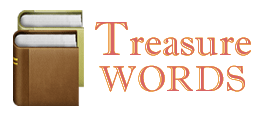meaning of forsythe
1. Forsythe A descendent of Algol 60, intended to be as uniform and general as possible, while retaining the basic character of its progenitor. Forsythe features higher-order procedures and intersection types. ftp://e. ergo. cs. cmu. edu/. ["Preliminary Design of the Programming Language Forsythe", J. C. Reynolds, CMU-CS-88-159, 1988]. FORTH 1. An interactive extensible language using postfix syntax and a data stack, developed by Charles H. Moore in the 1960s. FORTH is highly user-configurable and there are many different implementations, the following description is of a typical default configuration. Forth programs are structured as lists of "words" - FORTHs term which encompasses language keywords, primitives and user-defined subroutines. Forth takes the idea of subroutines to an extreme - nearly everything is a subroutine. A word is any string of characters except the separator which defaults to space. Numbers are treated specially. Words are read one at a time from the input stream and either executed immediately "interpretive execution" or compiled as part of the definition of a new word. The sequential nature of list execution and the implicit use of the data stack numbers appearing in the lists are pushed to the stack as they are encountered imply postfix syntax. Although postfix notation is initially difficult, experienced users find it simple and efficient. Words appearing in executable lists may be "primitives" simple assembly language operations, names of previously compiled procedures or other special words. A procedure definition is introduced by ":" and ended with ";" and is compiled as it is read. Most Forth dialects include the source language structures BEGIN-AGAIN, BEGIN-WHILE-REPEAT, BEGIN-UNTIL, DO-LOOP, and IF-ELSE-THEN, and others can be added by the user. These are "compiling structures" which may only occur in a procedure definition. FORTH can include in-line assembly language between "CODE" and "ENDCODE" or similar constructs. Forth primitives are written entirely in assembly language, secondaries contain a mixture. In fact code in-lining is the basis of compilation in some implementations. Once assembled, primitives are used exactly like other words. A significant difference in behaviour can arise, however, from the fact that primitives end with a jump to "NEXT", the entry point of some code called the sequencer, whereas non-primitives end with the address of the "EXIT" primitive. The EXIT code includes the scheduler in some multi-tasking systems so a process can be descheduled after executing a non-primitive, but not after a primitive. Forth implementations differ widely. Implementation techniques include threaded code, dedicated Forth processors, macros at various levels, or interpreters written in another language such as C. Some implementations provide real-time response, user-defined data structures, multitasking, floating-point arithmetic, and/or virtual memory. Some Forth systems support virtual memory without specific hardware support like MMUs. However, Forth virtual memory is usually only a sort of extended data space and does not usually support executable code. FORTH does not distinguish between operating system calls and the language. Commands relating to I/O, file systems and virtual memory are part of the same language as the words for arithmetic, memory access, loops, IF statements, and the users application. Many Forth systems provide user-declared "vocabularies" which allow the same word to have different meanings in different contexts. Within one vocabulary, re-defining a word causes the previous definition to be hidden from the interpreter and therefore the compiler, but not from previous definitions. FORTH was first used to guide the telescope at NRAO, Kitt Peak. Moore considered it to be a fourth-generation language but his operating system wouldnt let him use six letters in a program name, so FOURTH became FORTH. Versions include fig-FORTH, FORTH 79 and FORTH 83. FAQs http://www. complang. tuwien. ac. at/forth/faq/faq-general-2. html ANS Forth standard, dpANS6 http://www. taygeta. com/forth/dpans. html. FORTH Interest Group, Box 1105, San Carlos CA 94070. See also 51forth, F68K, cforth, E-Forth, FORML, TILE Forth. [Leo Brodie, "Starting Forth"]. [Leo Brodie, "Thinking Forth"]. [Jack Woehr, "Forth, the New Model"]. [R. G. Loeliger, "Threaded Interpretive Languages"]. 2. FOundation for Research and Technology - Hellas.
Related Words
forsythe |
Developed & Maintained By Taraprasad.com
